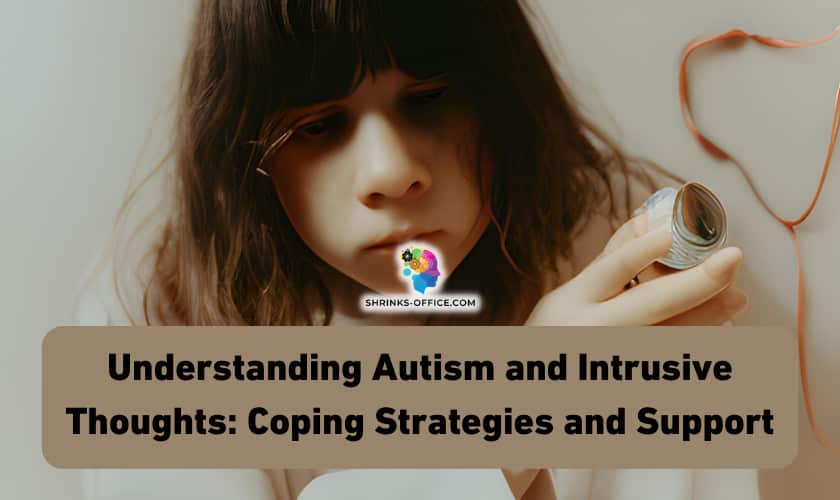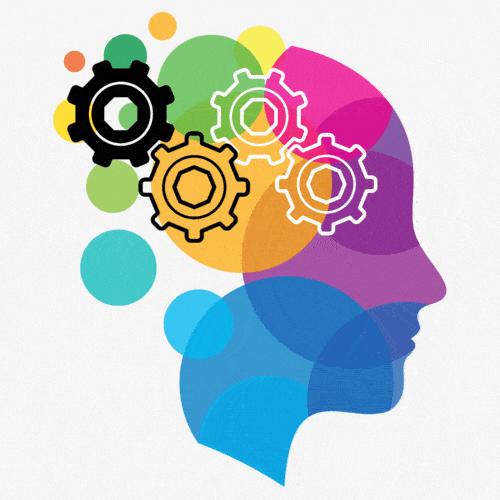In today's fast-paced world, finding moments of mindfulness can be a challenge. Embracing "The Power of Now"...

Autism and intrusive thoughts are distinct concepts, although they can sometimes coexist. Autism is a developmental condition that affects how a person communicates, interacts with others, and processes information. It is characterized by difficulties in social interactions, repetitive behaviors, and restricted interests.
On the other hand, intrusive thoughts are unwanted, persistent thoughts that can cause distress or anxiety. They are not specific to autism and can be experienced by people with various mental health conditions, such as obsessive-compulsive disorder (OCD), anxiety disorders, or depression.
- Practice mindfulness techniques, such as deep breathing or meditation
- Identify and challenge negative thought patterns
- Engage in activities that require focus and attention, such as puzzles, art, or physical exercise
- Accept the presence of intrusive thoughts without trying to suppress them
- Create a daily routine to provide structure and predictability
- Work with a therapist
- Connect with supportive friends, family members, or support groups
- Prioritize physical and emotional well-being by getting enough sleep, eating well, exercising regularly, and engaging in relaxation techniques
- Write down intrusive thoughts and any patterns or triggers you notice
- Limit exposure to trigger
Autism spectrum disorder (ASD) is a neurodevelopmental disorder that affects communication, social interaction, and behavior. Intrusive thoughts are a common experience for many individuals with autism which are unwanted and distressing and can arise spontaneously, These thoughts can be repetitive and may involve themes such as germs, harm, or symmetry, similar to the symptoms of obsessive-compulsive disorder (OCD).
In this article, we will explore the relationship between autistic disorder and intrusive thoughts, the impact of these thoughts on an autistic person's life, and the coping strategies and support for managing them. We will also discuss the potential comorbid diagnosis of OCD in individuals with autism.
Autism spectrum disorders (ASD) are characterized by a wide range of symptoms, and intrusive thoughts are often reported by individuals with autism, specifically those who are diagnosed with autism and obsessive-compulsive disorder [1]. These intrusive thoughts can be distressing and may interfere with an autistic person in daily functioning. They can range from worries about contamination, harm, or symmetry, to repetitive thoughts about routine or interests. These thoughts may cause anxiety and distress and can impact the quality of life of individuals with autism.
The relationship between autism and intrusive thoughts is complex and may involve various factors. Restricted and repetitive behaviors, which are hallmark features of autism, may intensify or trigger intrusive thoughts. For example, repetitive behaviors such as checking, ordering, or counting may be associated with obsessive and intrusive thoughts about symmetry or perfection. Additionally, sensory sensitivities, which are common in individuals with autism, may also trigger intrusive thoughts. Sensory overload or discomfort during sensory processing may lead to increased anxiety and intrusive thoughts related to sensory triggers.
s.

Intrusive thoughts can significantly impact the lives of individuals with autism, often causing distress and interfering with daily functioning. Understanding the different types and manifestations of intrusive thoughts is essential in order to provide effective support and coping strategies.


The comorbidity between anxiety disorders OCD and autism is well-documented in research. A recent systematic review found that around 40% of autistic individuals acquire at least one comorbid anxiety-related diagnosis. The most frequent diagnosis was specific phobia (30%), followed by obsessive-compulsive disorder (OCD; 17%).[2]
OCD refers to a mental disorder characterized by recurrent and intrusive thoughts, urges, or images (obsessions) that are followed by repetitive behaviors or mental acts (compulsions). People with comorbid OCD and autism display symptoms such as repetitive thoughts, rituals, or compulsions that are often related to sensory sensitivities. For example, an individual may repeat a certain behavior in order to reduce anxiety caused by external stimuli. Or they may engage in compulsive behavior such as checking and ordering activities to reduce their feeling of insecurity.
Furthermore, research has explored the longitudinal and offspring risk of comorbid OCD and autism. Studies found that individuals with both autism and OCD tend to have a higher risk of persistent OCD symptoms into adolescence compared to those with OCD alone [2]. Further, studies suggest that the offspring of parents with OCD and autism have an increased risk of developing OCD, autism, or both, suggesting a genetic and familial link between the two conditions [2].
Did you know?
There are 4 types of OCD: contamination, checking, symmetry and ordering, and intrusive thoughts. Each type presents unique challenges.

Managing intrusive thoughts can be challenging for young people, but there are coping strategies that can be helpful for individuals with autism. It's important to note that different strategies may work for different individuals, so it's essential to tailor the approach to each person's needs and preferences. Here are some coping strategies that may be effective for autistic people:

In cases where individuals with autism get a comorbid OCD diagnosis, it's important to seek appropriate professional support. OCD treatment typically involves a combination of therapy and medication and may be tailored to the individual's needs and preferences. Cognitive-Behavioral Therapy (CBT) with exposure and response prevention (ERP) is a commonly used therapy for OCD, which involves gradually confronting and resisting the urge to perform compulsive behaviors or restricted repetitive behaviors while managing the anxiety that arises from repetitive behavior. Medication, such as selective serotonin reuptake inhibitors (SSRIs), may also be prescribed to help manage the symptoms of OCD.
It's crucial to work with a qualified mental health professional, such as a clinical psychologist or psychiatrist, who has experience in treating both autism and OCD. They can provide a comprehensive assessment of developmental disorders, develop an individualized treatment plan, and provide ongoing support to individuals with comorbid autism and OCD.
Managing intrusive thoughts can be challenging for individuals with autism, but online therapy provides effective support. Cognitive-behavioral therapy (CBT), social skills training, and sensory regulation techniques can help. Creating a supportive environment, maintaining structured routines, and seeking qualified mental health professionals who understand autism and OCD are crucial. Online therapy offers valuable strategies to manage intrusive thoughts and promote fulfilling lives.
Yes, some autistic kids can have obsessive thoughts. These thoughts can manifest in different ways, such as having a strong interest in a certain topic or an obsession with certain objects or routines. Obsessive thinking is often seen as a symptom of autism and can interfere with daily functioning if not properly managed.
Managing obsessive thoughts in autism is not one-size-fits-all, but you may find helpful strategies. Try to identify triggers for obsessive thoughts and plan for when they occur. Distracting activities like hobbies or walking can work well. Relaxation techniques like deep breathing or visualization help reduce stress. Practice mindfulness to observe your thoughts without getting caught up in them and stay present. Mental health professionals can help you with guidance and support to overcome obsessive thoughts.
In today's fast-paced world, finding moments of mindfulness can be a challenge. Embracing "The Power of Now"...
In our fast-paced world, finding moments of tranquility can be a challenge. Meditation apps offer a convenient...
In our fast-paced world, taking time for self-reflection and mindfulness is essential for well-being. Journaling can be...
In today’s fast-paced world, managing stress has become an essential aspect of maintaining overall well-being. Two popular...
Dissociation can be a challenging experience, especially the one that happens at work. Are you experiencing dissociation?...
Bionic reading transforms the reading experience for ADHD individuals by guiding the eyes for focus and understanding. Dive into the world of bionic reading.
Explore the complexities of postpartum depression and genetics in our blog 'Is Postpartum Depression Hereditary?' for insights into maternal mental health.
